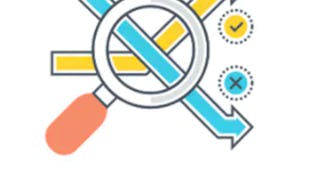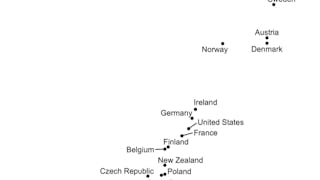This is the fourth course in the specialization and is aimed at those with basic knowledge of statistics, probability and linear algebra. It will prove to be especially interesting for those with datasets that are being used to make decisions: either business, medical, or technology based.
通过 Coursera Plus 解锁访问 10,000 多门课程。开始 7 天免费试用。


Data Science Decisions in Time: Using Causal Information
本课程是 Data Science Decisions in Time 专项课程 的一部分

位教师:Thomas Woolf
包含在 中
了解顶级公司的员工如何掌握热门技能

积累特定领域的专业知识
- 向行业专家学习新概念
- 获得对主题或工具的基础理解
- 通过实践项目培养工作相关技能
- 获得可共享的职业证书

该课程共有6个模块
How do we best use information for setting polices, for setting prices, and for deciding what actions to take? We've been exploring this throughout our specialization. In this fourth course, we add in an intriguing route for optimizing decisions: causality. We start with considerations of a causal graphical structure, when it can be cleanly defined, where we have the ability to make decisions, to take actions, and to evaluate overall policies with a clear eye towards how the individual decisions are causally linked to the outcome. This is not always possible, but the ability to think about setting up this type of decision making structure is the end goal of our specialization. It is only possible with sufficient data, and that data does need to have a particular structure, ideally even having been collected with a causal analysis as the end point. In this first week we evaluate how to best update prices for a supermarket, as an example of the type of decision making that may be possible with these methods.
涵盖的内容
3个视频1篇阅读材料3个作业
Classification and Regression are the lodestars of statistics and they come up again within the context of causal decisions. In this case the regression is really using the data to attempt to determine causal effects. In an analog to classification, when we define the optimal causal decision we are optimizing in a different way on the data than we do within the causal effect. This helps us to decide what we most want to determine from the data and what are the most important goals from the analysis. In this second week we continue our story for optimizing causal decisions by focusing on where best to locate a restaurant based on location data (anonymized) from cell phone user data.
涵盖的内容
3个视频1篇阅读材料3个作业
Online advertising is both a challenge and an opportunity for businesses. From the marketing perspective, defining how much to spend and on who and when is the question they need answered. From a user perspective, the fewer the ads the better, but if there must be ads, can they be relevant and helpful. This is an example of a marketplace, based on online advertising. A simple example, one that we considered earlier, is A:B testing. In this week we return to this question of how to optimize the presentation of information, but now from a causal perspective. We will go over the causal forest route for how to determine an optimal causal decision. We will also go over randomized clinical trials and how the control of the treatment effect can make the analysis significantly cleaner.
涵盖的内容
3个视频1篇阅读材料3个作业
David Blei's group contributed an intriguing route for defining causal decisions where confounding is still present, but can be treated in a way that still determines a causal understanding of the decision process. We will explore that paper, and its implications, along with other similar routes for working with data where the confounding issues may otherwise make the analysis a challenge. We open with how best to define the spend on a new movie project: hire that star actor or spend more on stunts? This is another example of a causally linked decision that does not have a final 'right' or 'wrong' but that does have major implications for a business.
涵盖的内容
3个视频1篇阅读材料3个作业
How best to determine a decision for a large group versus an individual is our final motif for the specialization. In many ways this is the defining question for healthcare: how best to determine an optimal treatment for each individual? While there is a lot of work ahead to describe how this may be done in a detailed setting, there has been progress towards how to use information collected for many individuals that can then be a help in defining the best treatment for an individual. It is this current progress that has many people excited for the future of personalized medicine. At the same time it is a appropriate to realize the limits of what can be done, right now, with the question of an optimal individual treatment.
涵盖的内容
3个视频1篇阅读材料3个作业
涵盖的内容
1个作业1个编程作业
获得职业证书
将此证书添加到您的 LinkedIn 个人资料、简历或履历中。在社交媒体和绩效考核中分享。
位教师

从 Data Analysis 浏览更多内容
 状态:免费试用
状态:免费试用Johns Hopkins University
 状态:免费试用
状态:免费试用Johns Hopkins University
 状态:免费试用
状态:免费试用Rice University
人们为什么选择 Coursera 来帮助自己实现职业发展




常见问题
To access the course materials, assignments and to earn a Certificate, you will need to purchase the Certificate experience when you enroll in a course. You can try a Free Trial instead, or apply for Financial Aid. The course may offer 'Full Course, No Certificate' instead. This option lets you see all course materials, submit required assessments, and get a final grade. This also means that you will not be able to purchase a Certificate experience.
When you enroll in the course, you get access to all of the courses in the Specialization, and you earn a certificate when you complete the work. Your electronic Certificate will be added to your Accomplishments page - from there, you can print your Certificate or add it to your LinkedIn profile.
Yes. In select learning programs, you can apply for financial aid or a scholarship if you can’t afford the enrollment fee. If fin aid or scholarship is available for your learning program selection, you’ll find a link to apply on the description page.
更多问题
提供助学金,





